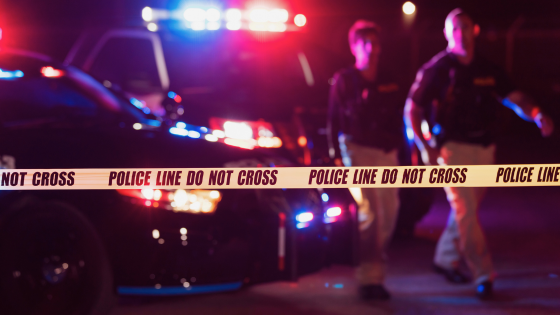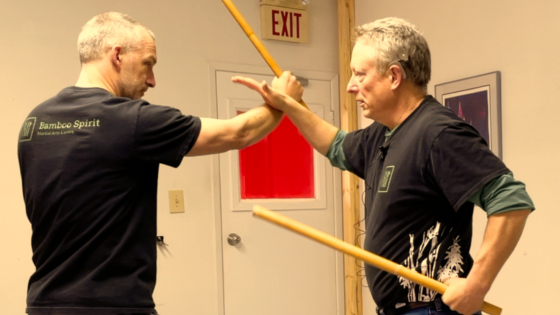Self-Defense Tips for Deaf Individuals
Introduction
I have been wearing cochlear implants since 2013. They are amazing and a vast improvement over hearing aids. But they are not the be-all and end-all. I often can’t hear people coming up behind me, and when I’m walking, I often don’t hear cars coming up behind me. This is likely because the cochlear implant microphones are at the front of the device. As you might imagine, this has self-defence implications for me and deaf people.
Fear not. What follows is general advice to keep yourself safe.
Self-defence is a crucial skill for everyone, regardless of their abilities. However, being deaf could present unique challenges in a self-defence situation. Therefore, deaf individuals need to adapt and prepare accordingly. This post will discuss the best tips for self-defence for deaf people.
1. Visual Awareness.
This is tip number one for me due to my inability to hear things behind me. Since I can’t always rely on my sense of hearing (via cochlear implants), I fall back on my visual awareness. Know what is around you. This means I am always aware of my surroundings. I am not particularly keen on any potential threats being behind me.
For example, I often ask for or take a table at the back end of a restaurant. This way, no one is behind me, and I can survey the landscape for potential threats. Police officers and other law enforcement professionals will recognize this behavior. Let me emphasize that it’s about safety, not paranoia.
The below video is a good visual representation of why I don’t let anyone behind me, especially if I can’t hear them approaching me.
If you are not able to view this video, go to here.
Visual awareness applies to hearing people as well. Sometimes, Ted Bundy waited until unsuspecting young women turned their backs on him before attacking them. Those who encountered him and survived had one thing in common: they kept their eyes on him and did not turn their backs on him.
See this video:
If you are not able to view the video, go to here.
One more thing. I can never understand why folks stand so close to subway lines while waiting for the next train. I prefer to stand with my back as close to the wall as practicable and survey the area for potential trouble.
2. Practice De-escalation and Avoid Provocation.
De-escalation is a crucial skill in self-defence situations. One should try to avoid a conflict before it turns violent. De-escalation techniques can prevent an attacker from becoming more aggressive or violent and decrease the intensity of an ongoing conflict.
“I see that you’re angry. Let’s take a timeout. Can we sit down and talk about this issue in a half hour?“
Employing de-escalation strategies can reduce the chances of resorting to the nuclear option. Physical force should always be a last resort. De-escalation techniques should be considered a critical step in any self-defence situation. The ability to de-escalate a situation is an important tool in the self-defence toolbox.
It is wise, both practically and legally, not to provoke another person or escalate a conflict. Any provocative or escalatory words or actions may nullify any self-defence claim that you may have.
From a practical perspective, screaming “you stupid mother*******r” at a bodybuilder in a rage roid isn’t the smartest thing to do. Don’t be surprised if you’re grievously injured in such a confrontation.
3. Maintain Distance From The Threat.
Maintaining distance from an assailant in a self-defence situation is crucial because it can give you more time to react and escape. The closer you are to an assailant, the more dangerous the situation becomes. Ideally, you should maintain a safe distance from your assailant.
In short, keep enough distance so the assailant cannot touch you within arm’s length. Try to be at least two arm’s lengths away from the potential assailant.

4. Create Witnesses.
Creating witnesses is an important strategy in self-defence situations. If you feel threatened, try to attract the attention of people around you. Make noise, scream for help, and do whatever you can to draw attention to the situation.
“Stay away from me!” (heads turn toward you and the potential assailant)
This will alert others to your predicament and may even deter your assailant. Potential witnesses may also be able to provide valuable evidence later if the situation requires legal intervention. For example, your self-defence claim will be greatly bolstered if several witnesses testify that an assailant attacked you without provocation.
5. Awareness of Exits and Safe Places.
Finding an exit during a self-defence situation can be crucial to ensure your safety. Being aware of your surroundings and the potential escape routes can help you react faster and make quick decisions.
Look for multiple exits in every situation and mentally map out escape routes. This habit should not take more than 15 to 30 seconds.
In an emergency, try to find the nearest exit and evacuate the premises as quickly as possible.
It’s important to remember that sometimes running away might be the safest option, and it’s okay to do so.

6. Know Self-Defense Techniques.
I have been asked whether knowledge of self-defence techniques is beneficial.
“Of course it is!“
However, self-defence techniques are not the end-all/be-all.
Should a conflict become violent, the most important consideration is how much fighting spirit you can summon to defend yourself. At the risk of oversimplifying things, many attackers desire easy or submissive victims. They prefer not to deal with those who give them “too much trouble.”
Go back to the video on Ted Bundy. One of his surviving victims fought him with everything she had. As far as I can tell, she had no martial arts or self-defence training. Instead, she summoned her fighting spirit and survival instinct. She fought until she escaped. She would later provide crucial clues to Bundy’s identity.
Knowing basic self-defence techniques can be useful. They can help you protect yourself in dangerous situations and give you the confidence to handle risky scenarios that could arise unexpectedly. It’s essential to understand that self-defence isn’t about being aggressive or violent but rather about equipping yourself with skills that enable you to respond appropriately to unprovoked attacks.
Training can also provide a greater understanding of situational awareness, helping you identify potential dangers and avoid them. Learning self-defence techniques can empower you to be proactive and protect yourself from victimization.
Conclusion
Speaking for myself, visual awareness is numero uno on my list of self-defence tips for deaf people. As indicated earlier in the post, I have difficulty hearing anything behind me, whether it be an automobile in the neighbourhood or a person quietly walking behind me.
I can relax as soon as I ascertain that my surroundings are free of threats. If I spot potential threats, I will move to avoid any possible confrontation.
Remember that these are general tips and may not apply to every self-defence scenario.
Would you like to see more tips on self-defense for deaf people? Please let me know.
In the meantime, I would be honoured if you subscribe to my blog! Thank you!
Share this post:
- Click to share on Twitter (Opens in new window)
- Click to share on Facebook (Opens in new window)
- Click to share on LinkedIn (Opens in new window)
- Click to share on WhatsApp (Opens in new window)
- Click to share on Nextdoor (Opens in new window)
- Click to share on Pinterest (Opens in new window)
- Click to email a link to a friend (Opens in new window)
Tags In
Brian Johns
Related Posts
4 Comments
Leave a Reply Cancel reply
Categories
- Arnis/Kali/Eskrima (113)
- Book Review (8)
- DVD Reviews (3)
- Guest Post (4)
- Inspiration (24)
- Martial Arts (99)
- My story (92)
- Safety (14)
- Tips & tricks (6)
- Uncategorized (3)
- YouTube Videos (8)






[…] Many martial arts school owners stress the importance of “awareness” to their students. Often, they refer to situational or environmental awareness. One example of “environmental awareness” is the presence of broken or non-functioning lights in a parking lot. We all prefer well-lit areas. I teach this in my martial arts and self-defence classes. Awareness is an important part of our self-protection toolbox. […]
[…] have taught self-defence classes at the local college since 2017. It’s been an interesting experience meeting men and […]
[…] you reach a comfort level training with sticks, empty-hand self-defence will be much easier. In addition, stick movements are easily translated into empty hand […]
[…] Self-Defense Tips for Deaf Individuals […]